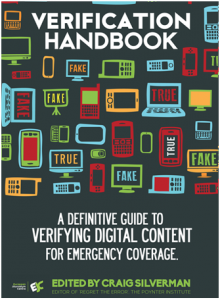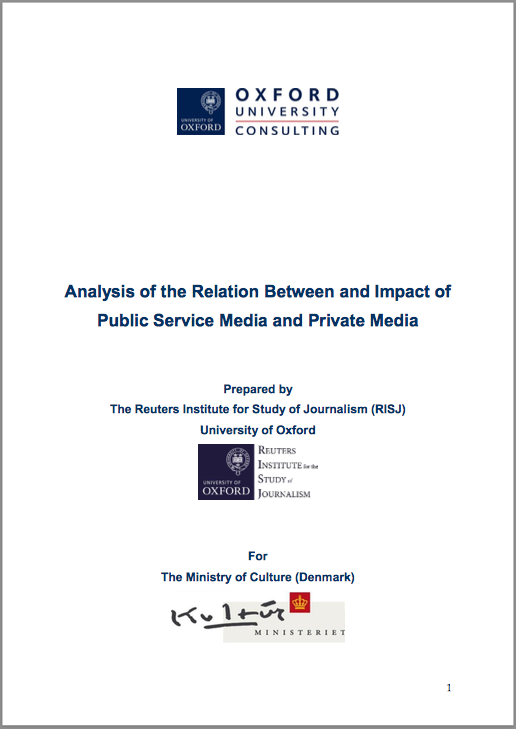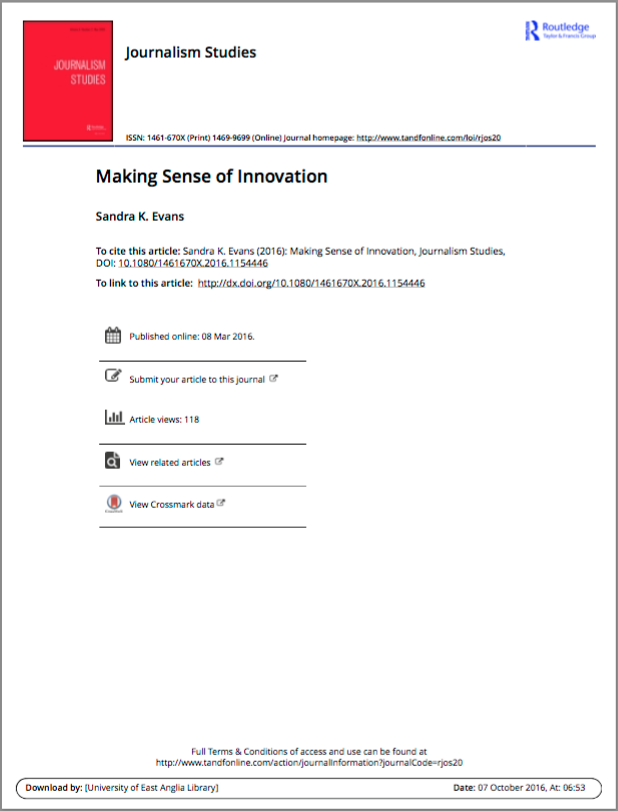What we do and do not know about the impact of public service media
REPORT
What do we know about the relationship between public media and private media and their respective impacts?
The Reuters Institute for the Study of Journalism (RISJ) has published a new report commissioned by the Danish Ministry of Culture.
The report reviewed the status of public service media and private media by examining over a thousand academic and stakeholders studies. The research covered three main aspects: their political impact, social impact, and market impact.
The research indicates that there is strong evidence that public service media have a positive political impact. However, there is little research on the social and market impacts.
As RISJ says, “what we do not know about the impact of public service media, especially in a digital environment, is at least as striking as what we do know.”
Making Sense of Innovation
JOURNAL
Process, product, and storytelling innovation in public service broadcasting organisations
Sandra K. Evans
Department of Communication, California State Polytechnic University, USA
(2016)
Overview
This article addresses the following question: “how do employees and managers make sense of innovation within their organizations in relation to a rapidly evolving digital media environment?”.
With a focus on public radio organisations in an increasingly digital, multi-platform media landscape, this article uses data from interviews with 56 employees from 11 public radio stations. The results, according to the author, “show how people in public media organizations make sense of innovation by relying primarily on process-oriented, rather than product-oriented frames”.
Making Public Television Social? Public Service Broadcasting and the Challenges of Social Media
JOURNAL
José van Dijck & Thomas Poell
Television & New Media
University of Amsterdam, Sage Publications
(2015)
Overview
This article investigates how the rise of social media affects European public service broadcasting (PSB), particularly in the United Kingdom and The Netherlands. The article explores this interaction on three levels: the level of the institution, professional practice, and content. The authors go on to explore how PSBs cope with the challenges of social media and whether it can be used to engage audiences without compromising public values.
Verification Handbook

Guide
This essential resource for journalists and aid providers offers the techniques, tools and step-by-step guidelines for how to deal with user-generated content (UGC) during emergencies.
Produced by the European Journalism Centre and authored by journalists from Storyful, the BBC and Digital First Media amongst others, the handbook gives “actionable advice to facilitate disaster preparedness in newsrooms, and best practices for how to verify and use information, photos and videos provided by the crowd“.
For access to this open source publication, click here.
For more access options, click here.
Public Service and Community Media
JOURNAL
Benedetta Brevini
The International Encyclopedia of Digital Communication and Society
University of Sydney. John Wiley and Sons, Inc
2015
Overview
This article outlines the similarities and differences between public service and community media. It offers a useful overview of their defining characteristics whilst situating them internationally and nationally in terms of their politics and funding mechanisms. The author goes on to explore their contemporary commercial and technological challenges.
To read the full article, click here.
CRTC: Broadcasting Regulatory Policy 2015
POLICY BRIEF
“The way forward – creating compelling and diverse Canadian programming”
Published in 2015, this regulatory policy paper by the Canadian Radio-Television and Telecommunications Commission (CRTC) sets out the Commission’s findings on ways to build a future Canadian television system that encourages the creation of compelling and diverse programming made by Canadians.
The report looks to build on the current strengths of the Canadian television industry and take it into the future; ensuring its ability to develop alongside changing audience viewing habits and the growing use of on-demand services.
Auntie Knows Best?
JOURNAL
Public broadcasters and current affairs knowledge
Stuart Soroka, Blake Andrew, Toril Aalberg, Shanto Iyengar, James Curran, Sharon Coen, Kaori Hayashi, Paul Jones, Gianpetro Mazzoleni, June Woong Rhee, David Rowe and Rod Tiffen.
Cambridge University Press, 1 January 2013, British Journal of Political Science
Abstract
“PSBs are a central part of national news media landscapes. In many countries, PSBs are the first choice of citizens when it comes to news providers. And in perhaps more countries still, PSBs are thought of as specialists in provision of hard news.
We test this proposition here using survey data from a large cross-national survey involving indicators of current affairs knowledge and media consumption. Specifically, we examine whether exposure to public versus commercial news influences the knowledge citizens possess about current affairs, both domestically and internationally. We also test, using propensity score analysis, whether there is variation across PSBs in this regard.
Results indicate that compared to commercial news, watching PSB has a net positive influence on knowledge of hard news, though not all PSBs are equally effective in contributing to knowledge acquisition. This knowledge gap between PSB and commercial news media consumption appears to be mitigated by factors such as de jure independence proportion of public financing, and audience share.”
Media Coverage of Science and Technology in Africa
JOURNAL
Sponsored by UNESCO
Department of Journalism and Communication, Makere University
Principal Investigator: George W. Lugalambi, PhD
2011
Overview
This paper critically analyses the role media has to play in facilitating the public understanding of science and technology across Africa. It does so against the backdrop of little or no previous studies on the subject, with few of them having systematically investigated the volume, quality, scope and perceptions of science and technology coverage.
This article seeks to amend this lack of previous research and explores coverage within the context of the contemporary media landscape of Cameroon, Kenya, Ghana, Namibia, South Africa, and Uganda.
Beyond Broadcasting: The future of state owned broadcasters in Southern Africa
JOURNAL
Written in 2009, this recommended article, supported by FesMedia Africa, conveys the complicated changes facing state-owned broadcasters in Southern Africa.
These changes include those influenced by the “digitisation of production, distribution and consumption of public interest news and current affairs” and their impact on key broadcast players across the region.
The report is split into sub-reports about the media landscape in individual states and the influence of technological, regulatory and conceptual changes to broadcasting services.
For full access to this open-source article, click here
Media System, Public Knowledge and Democracy
JOURNAL
A Comparative Study
James Curran, Shanto Iyengar, Anker Brink Lund, Inka Salovaara-Moring
Goldsmiths University London, Stanford University, Copenhagen Business School, University of Helsinki
European Journal of Communication, SAGE Publications, 2009, 24(1), p.5-26
Abstract
This article addresses the implications of the movement towards entertainment-centred, market-driven media by comparing what is reported and what the public knows in four countries with different media systems. The different systems are public service (Denmark and Finland), a ‘dual’ model (UK) and the market model (US). The comparison shows that public service television devotes more attention to public affairs and international news, and fosters greater knowledge in these areas, than the market model. Public service television also gives greater prominence to news, encourages higher levels of news consumption and contributes to a smaller within-nation knowledge gap between the advantaged and disadvantaged. But wider processes in society take precedence over the organization of the media in determining how much people know about public life.
To read this recommended article in full, click here.




